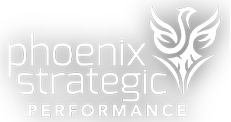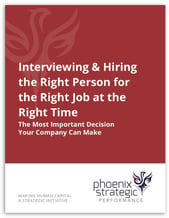Today, as we review our organizations in response to our current changing operating environment, every employee in your organization must operate at the highest level. It is a strategic imperative to critically and objectively review your people from a Human Asset Management Strategy perspective. If you are truly thinking about creating a robust Human Asset Management Strategy, then the concept of headcount and cost-cutting in the name of rightsizing represents a polar opposite approach to viewing people as assets.
Why?
When we talk about headcount, we are looking at a static numbers game at best, and a leadership and organizational ‘cop out’ at worst. Have you ever worked for a company that reduced its headcount by 10%? We’ve all been there. Here are a few scenarios that happen in organizations when we embark on the headcount/cost-cutting game:
Scenario 1: The highly accepted but strategically flawed last in first out (LIFO) test.
We somehow justify that longevity is a rational basis to keep people. That process is most often used by people who have longevity in the organization. These people may be past their human asset ‘sell-by date’ for your company, but that is often overlooked.
Risk Impact: LIFO may be the worst way of dealing with headcount issues. The LIFO accounting concept can have long-term human asset management consequences.
Scenario 2: The lowest level employees are the first to go.
What does that accomplish? From a cost perspective – not much. But it does check the ‘cut the headcount box.’
Risk Impact: What happens if the lowest level employees are the ‘bench’ you are bringing in to develop into high potential employees? You have just introduced a gap in your mid – long term human asset management strategy that could take years to close. In some cases, this may cost your business viability and sustainability.
Scenario 3: Organizational Politics - Beware of those with no sponsor/mentor.
Employees who stay are ‘politically’ connected to the organization. Someone at the senior/executive level is looking out for them.
Risk Impact: That’s fine if the employee is also a high-performing, contributing member. However, when a poor to average employee stays and a high-performing but politically-neglected employee is sacrificed in the name of ‘headcount cutting,’ there is no end to the potential fairness and legal issues looming ahead.
Scenario 4: Start to play the contractor game.
We can cleverly hire contractors and use them like elastic resources in anticipation of headcount cutting. When it’s headcount cutting time, we can claim they are really like employees and effortlessly cut them to justify headcount and cost-cutting.
Risk Impact: If your human asset management strategy resorts to contractors as your safety net, are you really managing your human assets strategically and for organizational sustainability, or are you just really engaging in short-term ‘plug and play’? What is the real cost to the organization when your contractors walk out the door – with no loyalty at all?
The Risk Management Impact and Consequences
This leads us to the final question that no one wants to own, “Who will do all the work”?
- With headcount slashing, 100% of the work typically needs to be done, with the remaining 90% of the staff. As an operating premise, that’s scary enough. Think about the consequences of overworking and depleting the remaining staff from a human asset strategy perspective. What does this do for your long-term strategic initiatives? Not much!
- Then, if we engage in any of the above headcount/cost-cutting/rightsizing initiatives, imagine the catastrophic, long-term organizational risk consequences. From a shareholder/investor perspective, any of these initiatives can be borderline management malfeasance.
Remember Newton’s Third Law and execute your human asset management strategy carefully! For every human asset action you take today, there is an equal and opposite reaction in the form of consequences you must own tomorrow. It’s time to evaluate employees from an asset management and investment lens rather than a headcount and near-term cost perspective.
Download our Human Asset Management Strategy Checklist, which highlights the criteria needed to evaluate your organization's human asset management strategy, or you can also schedule a complimentary assessment.






